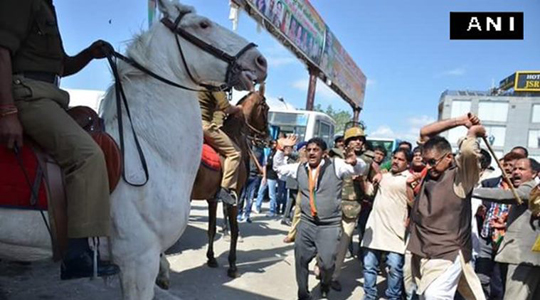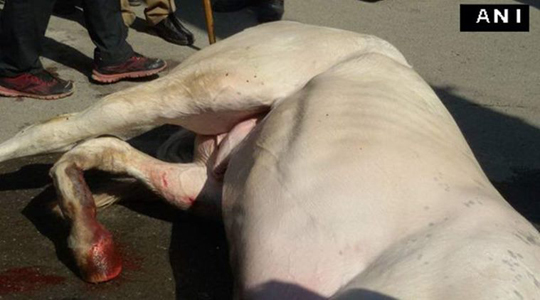Dehradun, Mar 14: In a shocking incident, BJP MLA Ganesh Joshi was on Monday caught on camera beating up a police horse with a lathi' during a protest against state government in Dehradun. The horse was deployed at the venue to control the situation.

Joshi lost his cool and attacked the horse with a lathi' and was followed by other protesters present there. The animal suffered serious injury in his leg and was admitted to the Indian Military Academy's Vetenirary Hospital, Dehradun SSP told news agency ANI.
“Doctors are saying that the horse's leg will have to be amputated. Case will be filed against the BJP MLA,” he added. Joshi, however, said that he was not at fault and that the horse was just thirsty. “As soon as the animal was given water, he was fine,” he said.
Reacting to the incident, Uttarakhand Chief Minister Harish Rawat said, “you are using lathi on a horse? I think the world tolerance in not in the BJP dictionary”.






Comments
They broken their Pitha's Leg!!!!????
Merciless goons, Terrorists.
A day will come when this horse will do the same to U over & over... it might be wierd but in the court of ALLAH (one who gave this life to this MLA & the horse)... it can take the revenge.
what is the use of putting him in jail. he might be there for few days in jail with royal treatment. and once he come out from the jail i am sure he will get good post in party.
When BJP saffron goons cannot spare a animal, how can they spare Muslims. The act of atrocities are in their DNA.
Down Down Ganesh Joshi.
Poor Horse. Cruel People.. Where is our Madam Menaka Ghandi...Lets see what action she will take on him.
These Goons are worst than animal... How come our people who support them doesnot UNDERSTAND their evil acts.
PLEASE BREAK MLA,S LEG PLEASE.. ,
IF HE WAS IN FRONT OF MY EYES I WOULD HAVE SLAPPED HIM FOR SURE .. NO HUMANITY.. WHAT TYPE OF MLA HE IS.. KICK OUT OF INDIA.. IF U SEE THE LEG OF HORSE ,,, REALY... PUT HIM IN JAIL.
wht the hell! then I think his leg should also be broken with a stick. then he will come to know about the pain
Add new comment